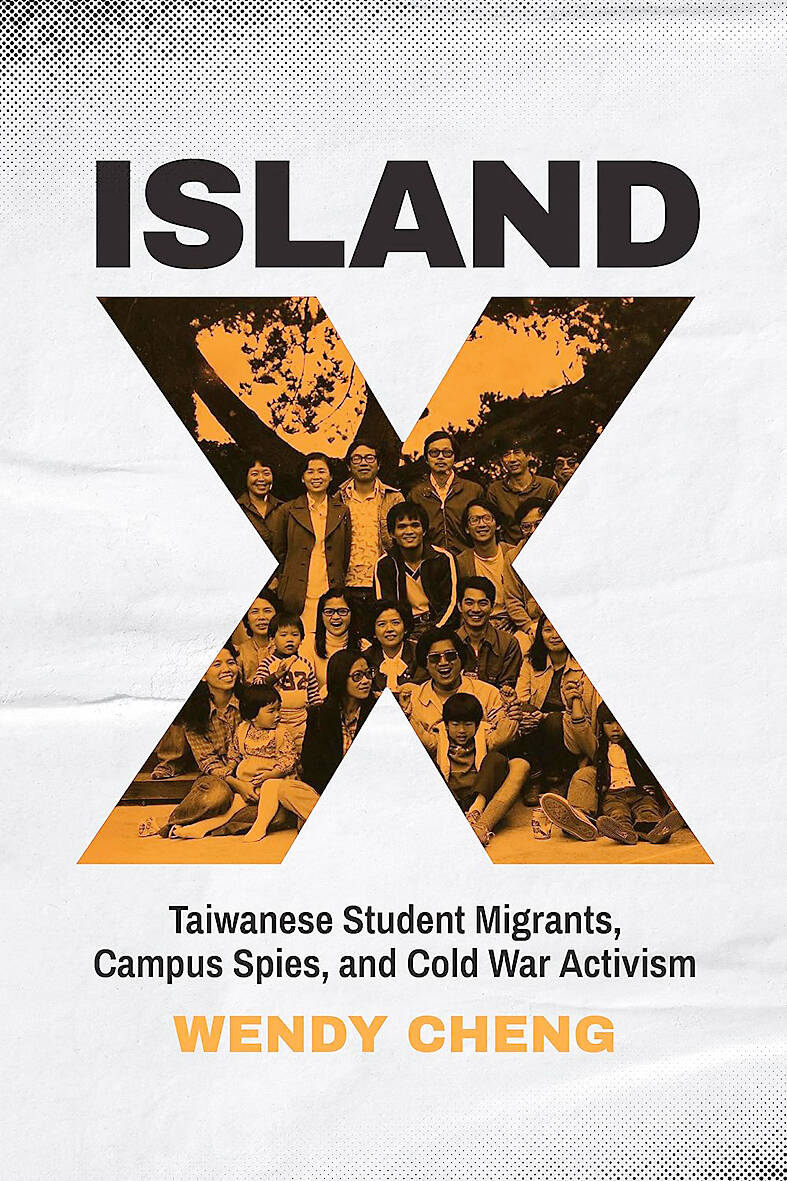There was an awkward moment during a Q&A session at a book launch in Taipei a couple of months ago. Following his presentation, an author who was visiting Taiwan to promote his work, was challenged about a statement on one of his slides that there had been “no political assassination” during Taiwan’s transition to democracy.
Several counterexamples were provided by audience members. One was the 1981 death of Chen Wen-chen (陳文成), whose body was found on the campus of National Taiwan University (NTU) following interrogation by the Taiwan Garrison Command — the notorious secret police who oversaw White Terror repression.
Although Chen’s death remains unsolved, the evidence indicates the possibility of a state-sanctioned murder. In 2020, Taiwan’s Transitional Justice Commission even concluded that this was the most plausible scenario.

An associate professor at Pittsburgh’s Carnegie Mellon University, Chen had been a student activist at the University of Michigan, where he provided the college newspaper with a list of “professional students.” This was the euphemism for scholars on US campuses who spied on fellow Taiwanese, reporting to Chinese Nationalist Party (KMT) authorities back home. It is rumored that former President Ma Ying-jeou (馬英九) was among their number.
DIASPORIC POLITICS
As this fascinating new book by Wendy Cheng (鄭昕) Island X makes clear, “Chen’s death served as an important catalyst for diasporic activist mobilization against KMT terror.”
Yet, in the weeks that followed, disagreements arose regarding Chen’s politics, with various groups attempting to pigeonhole him posthumously. At a memorial event in Ann Arbor, Michigan, a Hong Kong friend of the late academic complained that “right-wing” Taiwanese independence activists had handled the service, allowing them to cast Chen as a political ally. In fact, the friend insisted, Chen had always been a leftist.
Around the same time, a student official from the Free China Association at the University of Michigan told the college paper that Chen was an avowed socialist — “an ominous comment from a representative of an organization that was widely believed to have KMT informers in its ranks.”
The truth about Chen’s politics was never that simple. When he had arrived in Michigan as a doctorate student in 1978, it was “a hotbed of diasporic political contestation,” like other Midwestern universities with large numbers of Taiwanese, Chinese and students from Hong Kong.
Diasporic politics, Cheng observes, was divided into three camps: pro-KMT students from Taiwan who identified as Chinese, pro-Chinese Communist Party (CCP) students from Hong Kong who identified as Chinese and anti-Chinese Nationalist Party (KMT) students from Taiwan who espoused Taiwanese identity. This last category contained a subset who were interested in China and friendly with the Hong Kongers. Chen was one of these, Cheng surmises.
By the end of his period at Ann Arbor, however, he had become disillusioned with CCP excesses, and — spurred on by the Kaohsiung Incident of 1979 — had concluded that “ethnic oppression [of Taiwanese people] is the root cause of all injustices and inequalities in Taiwanese society.” As such, he had become “one of the strongest advocates of Taiwanese nationalism.”
NATIVE SOIL
Given his humble upbringing and affinity for the “native soil” literature movement of the 1970s — which was rooted in the realities of working-class life in Taiwan while stressing “Chineseness” — Chen’s early stance was in keeping with the times.
In emphasizing “national” pride, the nativists also condemned Japanese and American imperialism. Such thinking sparked the Baodiao Movement (保釣運動) of 1971 to 1972. Literally translating as “defend the Diaoyu [Diaoyutai] Islands movement,” these protests originated among Taiwanese and Hong Konger university students in the US in response to two events: Washington’s proposal to “return” the islands to Japan and the loss of the Republic of China’s seat at the United Nations. Although Taiwan’s government was also the target of criticism for failing to stand up to “imperialism,” the movement was “initially politically heterogeneous” enough to include everyone from KMT reformists to Maoists. For Baodiao leaders such as Lin Shiaw-shin, (林孝信), who undertook a doctorate in physics at the University of Chicago, the binary of independence vs unification was unhelpful. Instead, the leftist Lin emphasized the need to “overcome division” and to focus on democratization and “caring about Taiwan.”
This was key to Lin’s founding of the Organization for the Support of the Democratic Movement in Taiwan in 1979. The organization, said Lin, “does not insist on reunification or independence, but rather is based on respecting the will of the Taiwanese people.” The activities of “professional students” were anathema to this, and the organization’s magazine dedicated a special issue to the topic and printed an interview with Carnegie Mellon president Richard Cyert, days after Chen Wen-chen’s death.
BROKEN BRIDGE
Stripped of his passport and made stateless, Lin did not return to Taiwan until 1997. Like many of the subjects in this book, he emphasizes that his political outlook came from his circumstances. If he had not studied in the US, he would not have encountered the thinking and networks, nor developed the organizational abilities that he did. For many students, just being able to read freely was mind boggling: George H. Kerr’s Formosa Betrayed, writes Cheng, “inspired a generation of Taiwanese student activists in the United States.” (As Kerr revealed in his eyewitness account of the 228 Incident, the term “Island X” was the codename for a secret plan to invade Taiwan.)
The irony of Taiwanese students having to come to the US to learn about their own recent history through a book written by an American is obvious.
Yet, there was a paradox at play, as Cheng notes in a defining chapter on the University of Hawaii’s East-West Center and the case of Chen Yu-hsi (陳玉璽), who was imprisoned for over three years in Taiwan based on testimony from campus spies. For while the center had been established as a “bridge” across the Pacific through which progressive values could be conveyed, it came to represent acquiescence in the KMT’s suffocation of free speech on US campuses.
In a “toothless assertion of principles,” the university guaranteed nothing more than “the right to silence,” suggesting students were “free” to enjoy American liberties, without the protection thereof. That Taiwanese students became “active participants in global history and politics” was even more admirable. As for Chen Wen-chen: After 10 years of wrangling between Chen's supporters and the NTU administration, a memorial was unveiled in 2021 in his honor. Having withdrawn the university’s pledged half of the funding for the sculpture — which was replaced by fundraising from a foundation in Chen’s name and students from the math department where he had been a student — former NTU President Kuan Chung-ming (管中閔) praised Chen as a democracy and human rights trailblazer at the unveiling ceremony.
One wonders how Kuan — a former KMT minister — would have perceived the fallout over Chen’s death, which was still ongoing when Kuan began his studies at the University of California, Davis, in 1982. By connecting the activities of Taiwanese student activists and their nemeses with the present, Cheng implicitly poses such questions, demonstrating the continued relevance of this history.
Island x: Taiwanese student migrants, campus spies, and cold war

Last week the State Department made several small changes to its Web information on Taiwan. First, it removed a statement saying that the US “does not support Taiwan independence.” The current statement now reads: “We oppose any unilateral changes to the status quo from either side. We expect cross-strait differences to be resolved by peaceful means, free from coercion, in a manner acceptable to the people on both sides of the Strait.” In 2022 the administration of Joe Biden also removed that verbiage, but after a month of pressure from the People’s Republic of China (PRC), reinstated it. The American

Chinese Nationalist Party (KMT) legislative caucus convener Fu Kun-chi (傅?萁) and some in the deep blue camp seem determined to ensure many of the recall campaigns against their lawmakers succeed. Widely known as the “King of Hualien,” Fu also appears to have become the king of the KMT. In theory, Legislative Speaker Han Kuo-yu (韓國瑜) outranks him, but Han is supposed to be even-handed in negotiations between party caucuses — the Democratic Progressive Party (DPP) says he is not — and Fu has been outright ignoring Han. Party Chairman Eric Chu (朱立倫) isn’t taking the lead on anything while Fu

There is a Chinese Communist Party (CCP) plot to put millions at the mercy of the CCP using just released AI technology. This isn’t being overly dramatic. The speed at which AI is improving is exponential as AI improves itself, and we are unprepared for this because we have never experienced anything like this before. For example, a few months ago music videos made on home computers began appearing with AI-generated people and scenes in them that were pretty impressive, but the people would sprout extra arms and fingers, food would inexplicably fly off plates into mouths and text on

Feb 24 to March 2 It’s said that the entire nation came to a standstill every time The Scholar Swordsman (雲州大儒俠) appeared on television. Children skipped school, farmers left the fields and workers went home to watch their hero Shih Yen-wen (史艷文) rid the world of evil in the 30-minute daily glove puppetry show. Even those who didn’t speak Hoklo (commonly known as Taiwanese) were hooked. Running from March 2, 1970 until the government banned it in 1974, the show made Shih a household name and breathed new life into the faltering traditional puppetry industry. It wasn’t the first